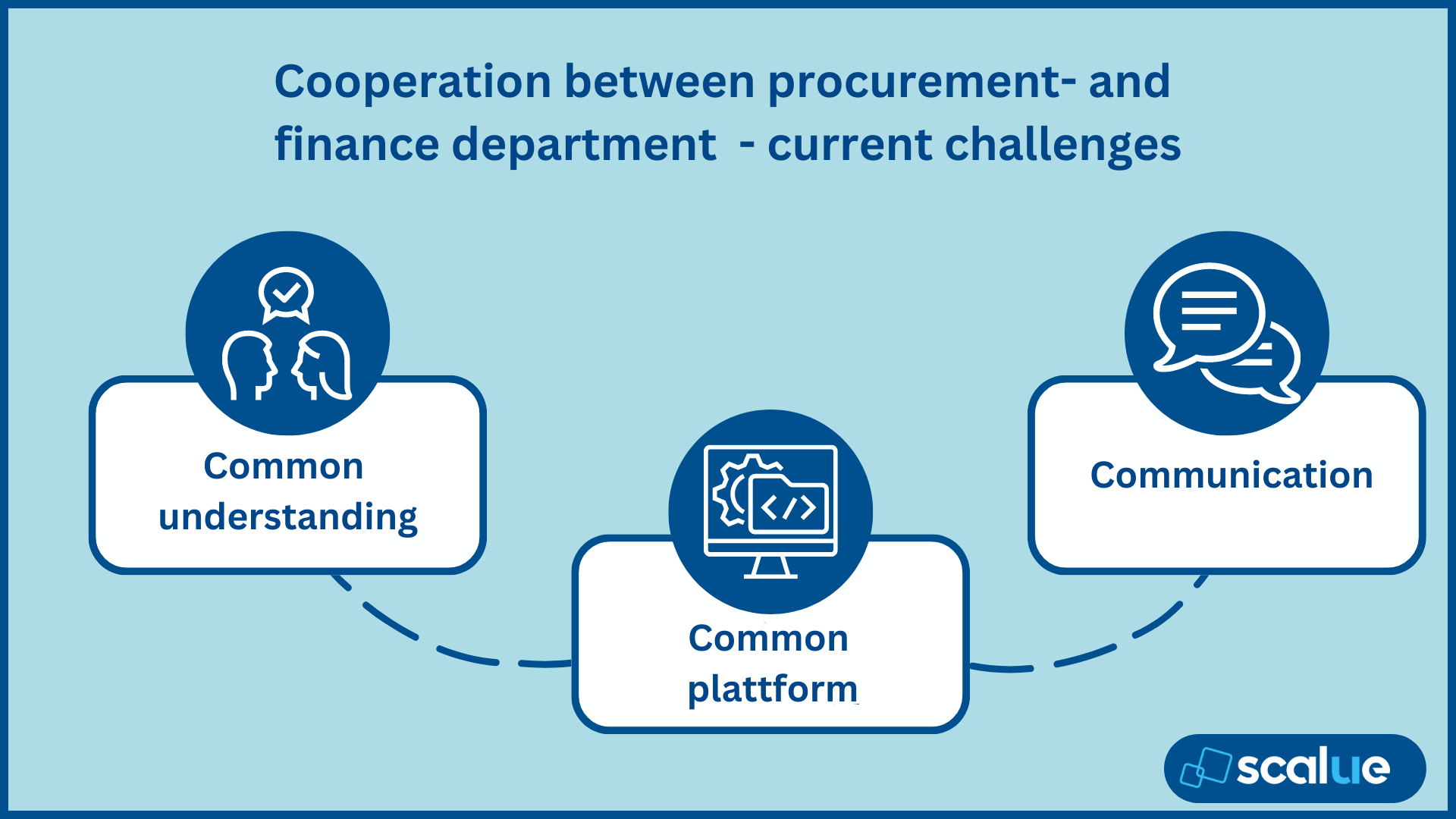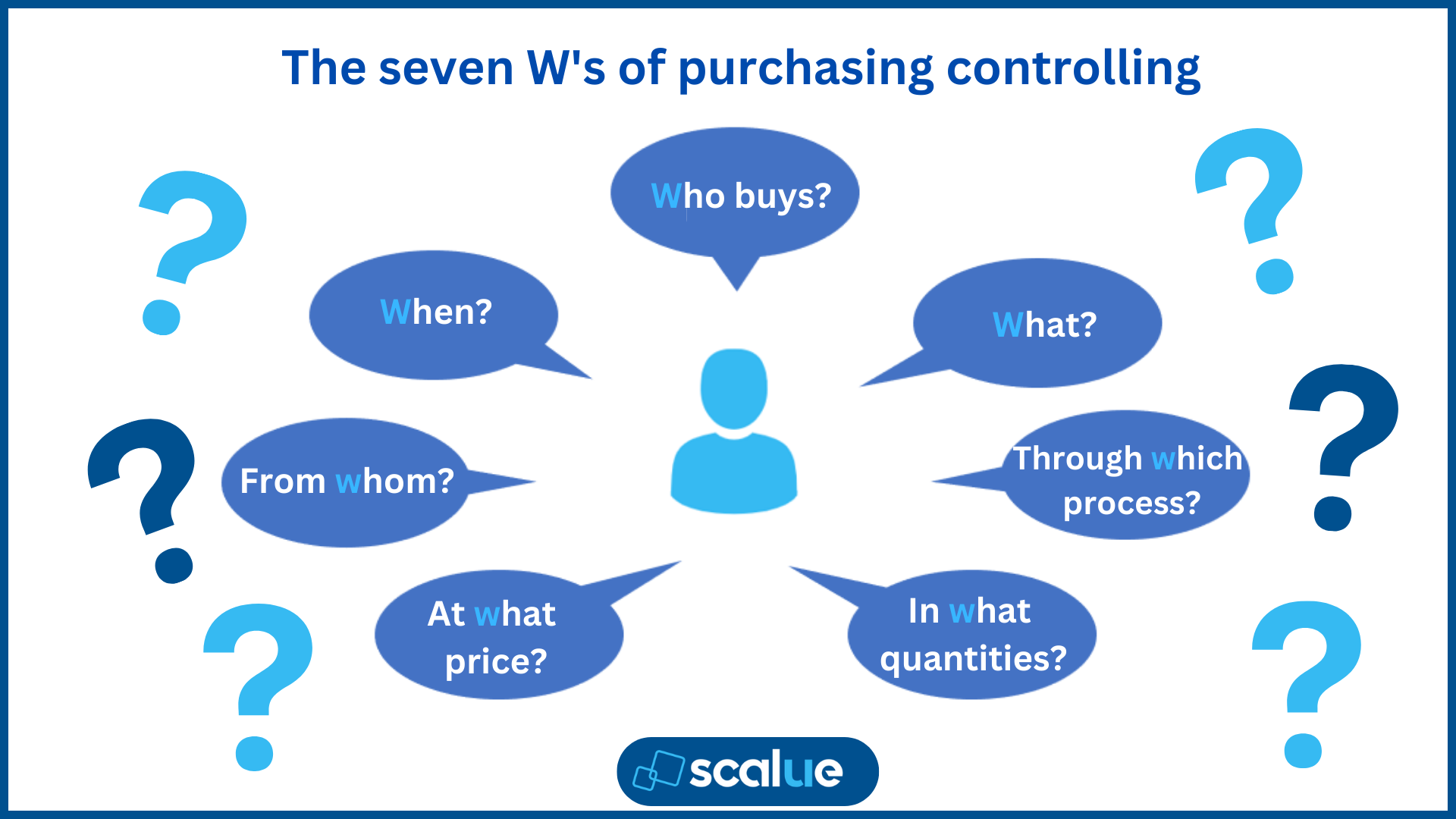Existing customer? Login
Blog
November 13th, 2022
Procurement and finance department: hand in hand for corporate success
 Samir Kharkan
Samir Kharkan
Procurement and finance department: hand in hand for corporate success.
The procurement and finance departments usually pursue one and the same goal. Nevertheless, differences between the two departments occur time and again in everyday work. Yet both departments would be much stronger if they pulled together. Find out here how the purchasing and finance departments can come together and what role both the CFO and the right software play in this.
Procurement vs. finance department - the status quo.
The current situation in many companies is as follows: The procurement department plans, controls, and monitors the entire procure process. From the selection of suppliers to the quality assurance of the purchased goods. The primary goal of the procurement department is of course the reduction as well as the avoidance of costs, but the stability of supply chains and risk management are also important areas of responsibility. Responsibility for this department usually lies with the procurement management. In contrast, only a few medium-sized companies have a CPO (Chief Procurement Officer). This is because the procurement department, unlike other departments, is not represented by a top management position, but is usually subordinate to the CFO (Chief Financial Officer) or the COO (Chief Operating Officer), for example. Thus, the interests of the procurement department cannot be represented directly at the top management level.
Opposite to this is the finance department. Here, the focus is primarily on the management of financial flows, in particular the preservation of the company's liquid funds. To ensure this, the cash flow, OPEX/CAPEX, and working capital of the company, among other things, are closely monitored and optimized. The decisions within this department are made by the CFO - one of the management positions that is filled particularly early on, even in small and medium-sized companies. The CFO can ensure here that the interests of the finance department are represented by top management.
The current challenges
So both the procurement and finance departments are basically pursuing one and the same goal: avoiding costs and thereby ensuring the company's ability to act. Despite this common goal, however, tensions or misunderstandings repeatedly arise along the way. But what is the actual reason for this?

1. Common Understanding: In many companies, there is a lack of both understanding of the other department's workflow and knowledge of a common goal.
2. Shared Platform: Often, the procurement and finance departments do not operate on the same data, let alone the same platform or software.
3. communication: Due to the lack of common ground, there is often no or poor communication between the two departments or between purchasing management and the CFO.
Procurement vs. finance department becomes joint purchasing controlling.
However, it can also work differently. Namely, when the purchasing and finance departments work together and decide to achieve their common goals. An essential component of this is purchasing control, which acts as a link between the two departments.

The goal of purchasing control should be to manage the purchasing department efficiently and strategically, following the company's goals. In this way, it is possible to optimize the purchasing department concerning the company's goals and to save costs. Because: Good purchase controlling is in many cases the most efficient possible for an enterprise to uncover saving potentials and to save costs effectively since depending upon the industry up to 80% of the profit and loss calculation are determined by the purchasing department. This then not only puts the purchasing department in a better light but also helps the finance department to increase financial planning capability within the company.
At best, large savings in the purchasing department can even mean that savings are not made at the wrong end instead - for example, in personnel costs. Or as Rainer Veith, CFO, Member of the Executive Board at SALZGITTER MASCHINENBAU AG, put it at the Procurement Summit 2020:
"Personnel costs are an issue, yes. But it's faster, I think easier, and more human to look at having Savings in Purchasing
-Rainer Veith
The seven W's of purchasing controlling
The seven W's of purchasing controlling offer good assistance in setting up purchasing controlling. These central questions give purchasing management and the team an initial orientation as to which data they should collect and pass on to other departments to increase communication and cooperation. Ask about the seven W's as follows:
● Who buys
● When
● What
● From whom
● At what price
● In what quantities
● Through which process?
With the help of these guiding questions, goals or key figures can be easily derived, and purchasing processes and reports can be presented more easily. In addition, the seven W's form a good basis for initial data management within the purchasing department, as important master or document data is obtained with their help.

Of course, the purchasing department is not solely responsible for purchasing control: Good purchasing control can only succeed if all departments work hand in hand. To achieve this, a general understanding should first be created that purchasing control is essential for the company's success. If necessary, the finance department must first be convinced that the use of purely financial data covers part, but by no means all, of the necessary data. If it becomes too technical, the IT department can be brought on board. However, IT departments often have a high workload, which means that the purchasing controlling project can be doomed to failure purely due to the lack of IT expertise. Especially in medium-sized companies, the use of a plug-and-play solution, such as SCALUE, can therefore be a great advantage, as it can be implemented within a few days and without the need for large resources from the IT department.
The CFO's view of the purchasing department-it's all a matter of perspective.
Now, of course, the question arises: Why don't more CFOs rely on the purchasing department to quickly and "humanely" reduce costs or even prevent them from arising? Of course, this question cannot be answered quite so sweepingly. In many companies, as already mentioned, there is simply a lack of the necessary channels for communication between purchasing management and the CFO. Elsewhere, the CFO and management are so focused on increasing sales that they simply lose sight of the other side of the income statement. And in almost all cases, there is also a lack of up-to-date and comprehensive purchasing data that could be used as a basis for joint decision-making.
Of course, there are also CFOs and finance departments that already work closely with their purchasing departments. In Rainer Veith's case, for example, this results from the fact that he used to work as a purchasing manager and is therefore very familiar with the perspectives of both departments. But even without his past in purchasing, this conflict can be resolved - and this is precisely where purchasing control comes into play again. After all, well-functioning purchasing control forms the basis for successful cooperation between purchasing management and the CFO in all cases.
You would like to know how SCALUE could help to optimize your procurement?
With SCALUE Essentials, the purchasing and finance departments work hand in hand.
Well-functioning purchasing control thus forms the basis for successful collaboration between the purchasing and finance departments; so far, so good. Now the only question is: What is actually the basis of good purchasing control?
The basis of a successful purchasing department - not only in the area of controlling - is the efficient collection, structuring, and preparation of relevant data. Because without the right data basis, the purchasing department simply lacks transparency, orientation, and the ability to set goals.
But that's all over now, thanks to the SCALUE Essentials SaaS solution. That's because our intuitive software suite helps you digitally capture all your purchasing data at the touch of a button and quickly and clearly reveal hidden savings potential. What's more, our web app helps you visualize the savings opportunities uncovered and share them across departments within your organization. This not only saves the purchasing department and the entire company a lot of time and money but also increases profitability in the short or long term - and that ultimately makes everyone happy, from the purchasing department to the CFO to the management.

How SCALUE can help you? Schedule a free demo now!
Learn more on our blog: Get More Insights
Follow us on LinkedIn: Get more Content